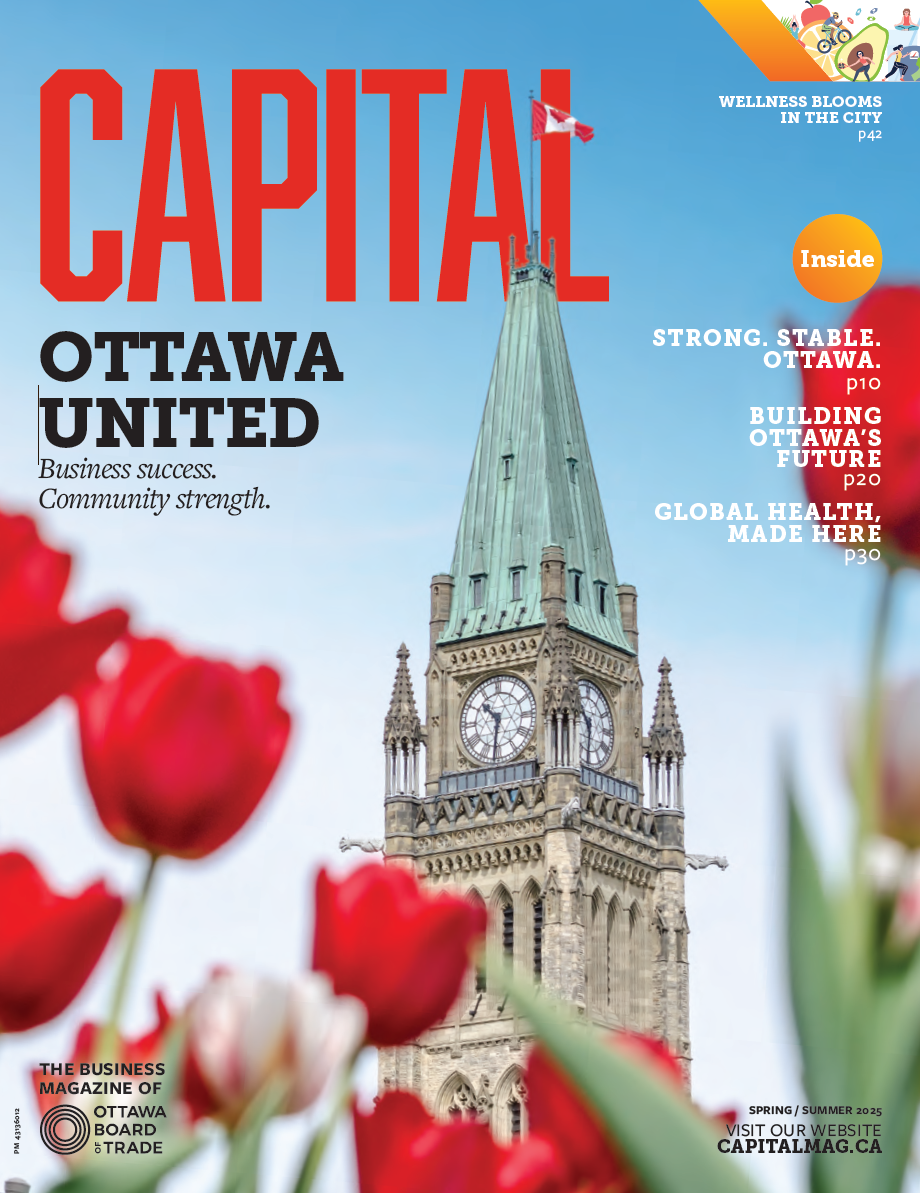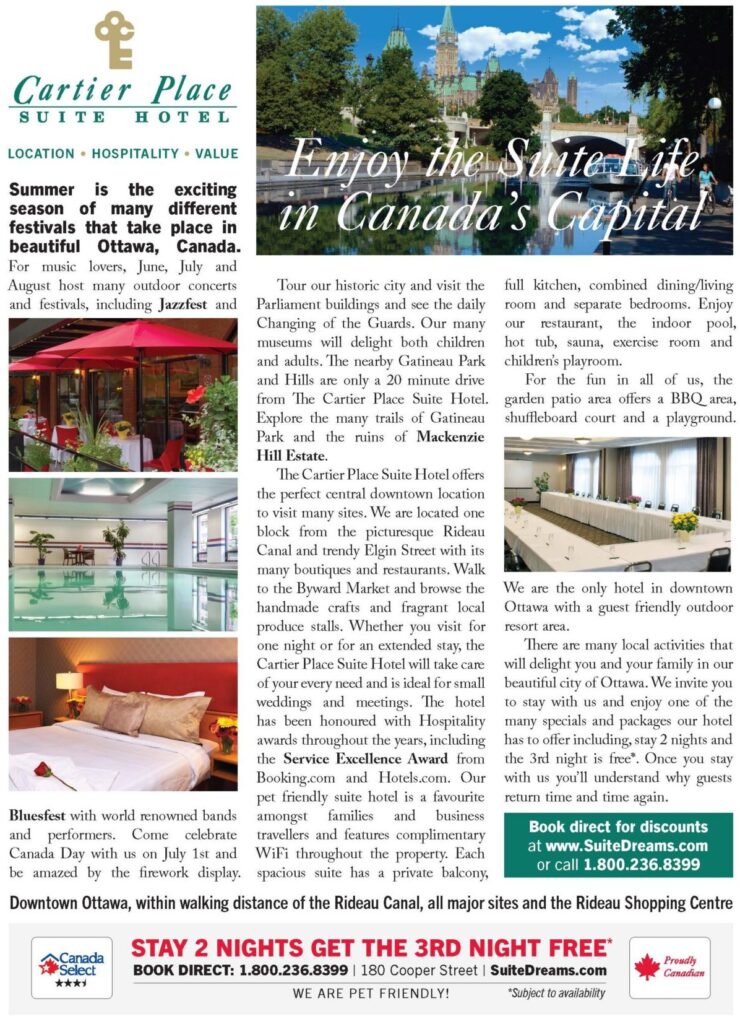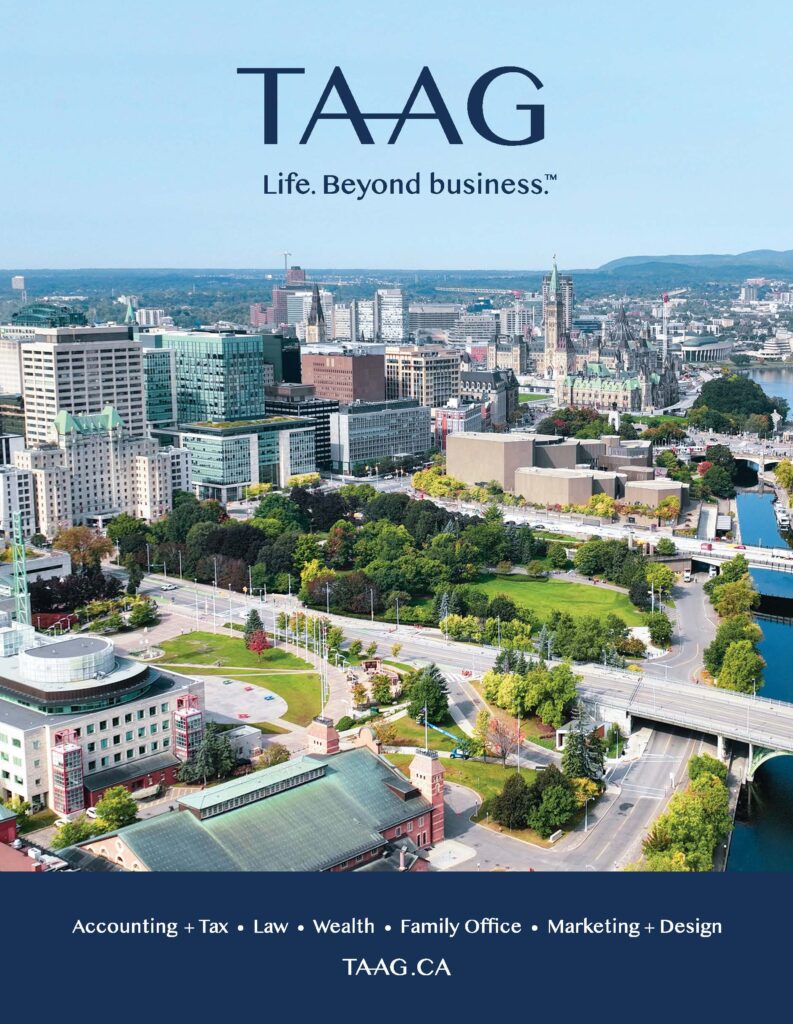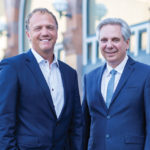Feature: THE NCC – Committed to Making a Dream Come True
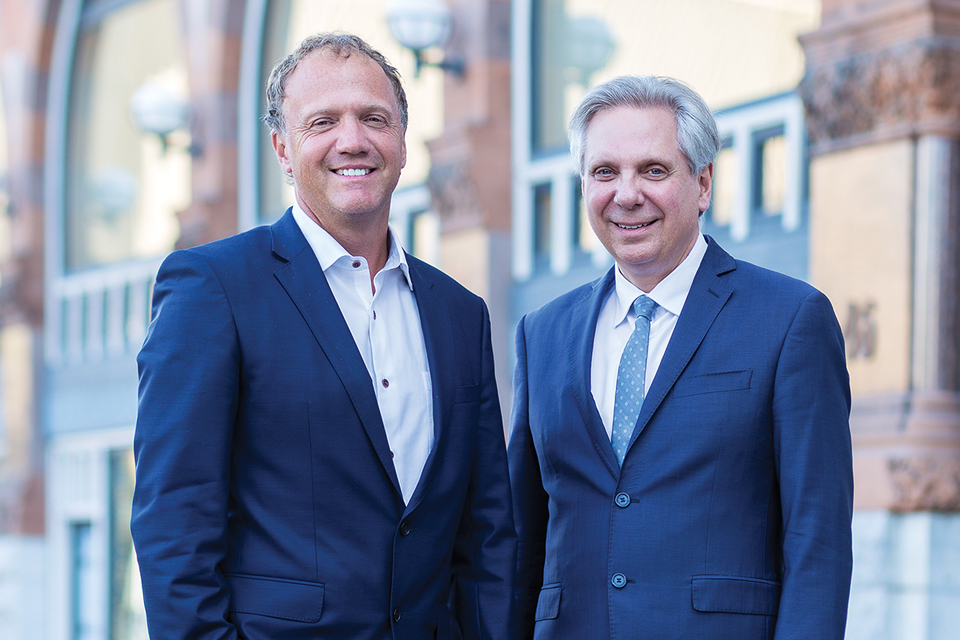
Marc Seaman (left) Chairman of the Board, National Capital Commission Dr. Mark Kristmanson (right) CEO, National Capital Commission
Not all dreams come true overnight. Many—particularly the big ones—are realized over time. Slowly, a piece here, a bit there.
By Alje Kamminga
SO IT IS with the Plan for Canada’s Capital 2017-2067, the National Capital Commission’s long-term vision for the future of Canada’s Capital Region. As ambitious as it is sweeping, the plan strives to accomplish two key goals: pay homage to Canada’s 150th birthday celebrations; and paint a picture of what Canada’s capital will look like in 50 years.
With 17 milestone initiatives*—all to be completed on or before Canada’s 200th birthday in 2067—it’s clear that the Plan for Canada’s Capital will be a major part of the NCC agenda for decades to come. But for the next five years at least overseeing that challenging agenda—and helping to move those complex initiatives forward—will be Marc Seaman, the NCC’s newly appointed Chairman of the Board, and Dr. Mark Kristmanson, the NCC’s Chief Executive Officer.
On the surface, the two appear to have little in common. While friends and business associates describe Marc Seaman as positive, energetic and enthusiastic, Dr. Kristmanson is generally regarded as a quiet academic and cultural sector leader. A straight talker, yes, but someone who possesses—and appreciates—a dry sense of humour. And while Seaman is new to the NCC—he was appointed for a five-year term in June of this year—Kristmanson has been a member of the team for more than 13 years. Seaman and Kristmanson acknowledge their differences but see them in a positive light. They believe varied backgrounds will prove invaluable in their shared commitment to help build a capital that is relevant and attractive to all Canadians.
“As CEO, Mark provides the leadership,” says Seaman. “And even in the short time I’ve been here, I’ve seen him consistently provide the strategic direction and synergy this plan requires. A project of this magnitude needs strong vision and execution, which Mark delivers. The board is here to provide him and his management team with proper governance and oversight to realize that vision.”
Seaman points to the fact that when Kristmanson took over as CEO in 2014, the relationship between the NCC and the cities of Ottawa and Gatineau was thorny at best. Wanting the NCC to evolve into a more open and transparent organization, Kristmanson worked hard to strengthen the relationship. “We are the largest landowner in the region,” he says, “but compared to Gatineau and Ottawa, we are a much smaller organization. It only made sense that we try to work more closely with them.”
Kristmanson succeeded. Although non-voting members, the mayors of Gatineau and Ottawa, Maxime Pedneaud-Jobin and Jim Watson are now both on the NCC Board of Directors. And while all acknowledge that they will continue to have differences, the relationship among the three is vastly improved.
“One of the NCC’s goals is to be a collaborative organization. Bringing about that level of co-operation and collaboration with the municipalities shows real leadership and is an example of the partnerships we need to forge,” says Seaman. “I know it will pay real dividends moving forward as we continue to grow these relationships.”
Kristmanson, meanwhile, is confident that Seaman’s business background (he is currently a senior executive with Microsoft, a position he will continue to fill) will pay huge dividends during his term as chairman. “Marc brings significant private sector experience to the NCC. And we need, want and expect the private sector—along with all levels of government—to play a major role in creating a diverse and vibrant capital region.” In fact, the NCC’s 13-member board, of which Marc is now the head, is responsible for fostering relationships between the NCC and other levels of government and the public.
While the 17 milestone initiatives are priorities for both Seaman and Kristmanson, they agree that the foundation upon which those initiatives were built is equally, if not more, important. Comprising that foundation are three themes: an inclusive and meaningful capital that preserves and cherishes national symbols, while respecting Indigenous heritage; a picturesque and natural capital that values public green space and promotes environmental sustainability; and a thriving and connected capital whose net-works extend around the globe.
“Of course, all of the 17 initiatives are desirable,” says Kristmanson. “But many are also aspirational. We have to recognize that the capital will evolve over the next five decades; priorities will change and we have to be prepared to change with them.” One priority unlikely to change, however, is the LeBreton Flats redevelopment.
Of the 17 initiatives, none is likely to change the national capital more dramatically than the transformation of LeBreton Flats, described by many as the most important project in the National Capital Region in the past 50 years. Under the plan, LeBreton Flats will evolve into an entirely new downtown neighbourhood, including a sports and entertainment centre, an LRT station, and abundant green space where thousands can gather, and much more. An ambitious but formidable challenge. And one that Seaman is particularly eager for the organization to take on. Even before joining the NCC, he was a vocal supporter of developing LeBreton Flats. In a letter to the Ottawa Citizen in 2016, he said “the ultimate winners in this process are the citizens of the region and more broadly, all Canadians, as this landmark urban property will finally be redeveloped into an area that will drive tourism, economic development and entertainment 365 days per year.
“It will,” he went on, “become one of Canada’s most desirable locations to live, work and play.”
Kristmanson says the LeBreton Flats project, while clearly vital, is still just part of a much bigger picture, one that involves the cities, the federal government, the Indigenous peoples on whose lands the capital was built and Canadians from coast to coast.
“Working together, we can create an economically competitive and sustainable region. We can and will build a capital that is relevant and attractive to all Canadians.” It’s a dream. A large dream, driven by the NCC, shared by Canadians.
* To view the NCC’s Plan for Canada’s Capital, 2017–2067, including the 17 key initiatives, visit http://ncc-ccn.gc.ca/our-plans/the-plan-for-canadas-capital.
Placemaking: Tedibà Màmadosewin/ The Gather-Ring
By Ruth Seeley
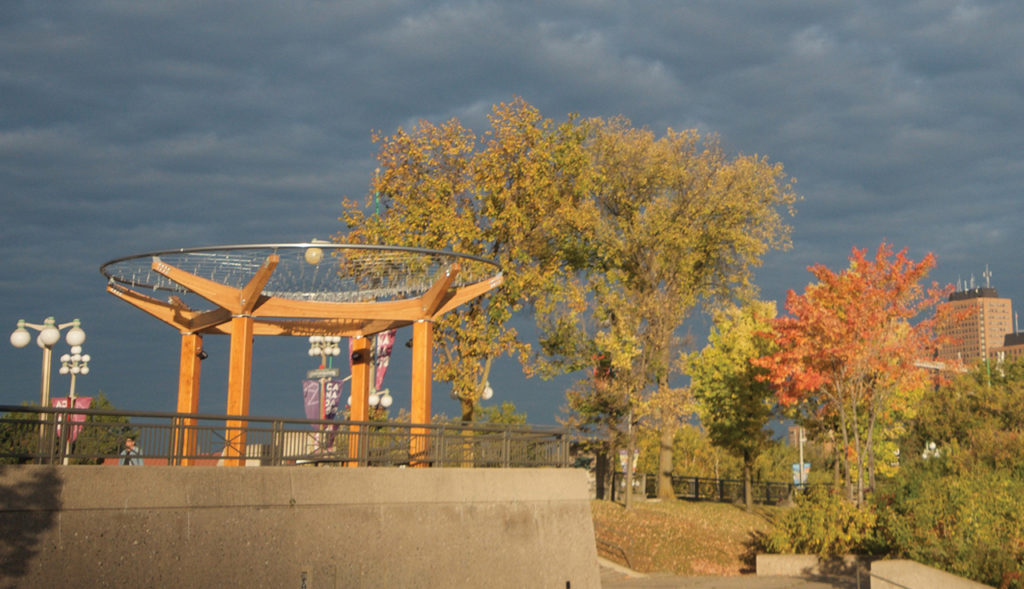 “The Gather-Ring is an offering to the community, providing a place to come together for cultural exchange, celebrations, debates, discussions, storytelling, and reflections on the history of the land,” said Manuel Baez. Tedibà Màmadosewin is the Anishabe name for The Gather-Ring, a “symbolic circle for cultural exchange, storytelling, discussion, and reflection.”
“The Gather-Ring is an offering to the community, providing a place to come together for cultural exchange, celebrations, debates, discussions, storytelling, and reflections on the history of the land,” said Manuel Baez. Tedibà Màmadosewin is the Anishabe name for The Gather-Ring, a “symbolic circle for cultural exchange, storytelling, discussion, and reflection.”
Public art commissioned by Heritage Canada under the Art in the City Program, the installation on the plaza of the Portage Bridge on Wellington Street will be in place until July 2018. The concept grew from community work Baez was doing with Canada’s Indigenous Task Force, a non-profit housing coalition, and the Ottawa Aboriginal Coalition. As part of his collaborative approach, he consulted with Kitigan Zibi Anishnabe First Nation Elders Claudette Commanda and Verna McGregor. The bridge’s location has centuries of Indigenous and settler significance: it links Gatineau and Ottawa, crosses Victoria Island and marks the end of the Portage Trail skirting the Chaudière Falls, where both Indigenous peoples and settlers traveled and traded.
“I was immediately inspired by the panoramic view … the history from both an Indigenous and European perspective, and by the fact that it was along the Confederation Loop. 2017 is both the anniversary of Confederation and a critical time to reflect on Truth and Reconciliation,” said Baez.
Baez, Associate Professor at Carleton University’s Azrieli School of Architecture & Urbanism, has been working with the Ottawa community since he created a ceiling installation called Resonant Currents for the original Hub Ottawa Bank Street location. Malleable birch plywood complexly bent recalled aboriginal art, Arabic calligraphy, and Celtic knotting while adding beauty to the industrial high ceilings of the co-working space. “We did a crowd-funding campaign for that installation, a metaphor for interconnections,” said Luc Lalande, Manager, Community Innovation at Algonquin College, who helped brainstorm the Heritage Canada proposal for The Gather-Ring.
Working with local glass artist Charlynne Lafontaine, Tim Priddle from The WoodSource in Manotick and a group of Carleton architecture students, Makerspace North was the installation’s final staging platform, although initial staging began at Lafontaine’s Loretta Studios & Gallery. Lafontaine created the 600 or so pieces of handblown borosilicate glass for the dreamcatcher portion using a technique called flamework, then embedded glass rings into each to capture light and echo the dreamcatcher shape. “I love that it’s an engaging piece where people can meditate on the past and think about the future,” said Lafontaine.
Incorporating two iconic symbols of settler and Indigenous Canada, the tree and the dream catcher, The Gather-Ring’s four Douglas fir pillars represent Canada’s founding provinces. The pillars support Lafontaine’s web of light and glass pendants. A platform and benches crafted from recovered Ottawa River white pine are positioned in the centre of the installation and surround a black granite Turtle Island. The Canadian granite said Baez, “had to capture the depth of time and reflect the sky.” Baez and Lalande are working with Synapcity to engage the community in grassroots Gather-Ring projects while seeking a permanent home for the installation – perhaps on Victoria Island.




